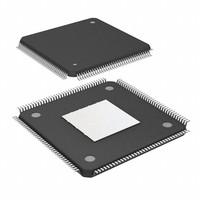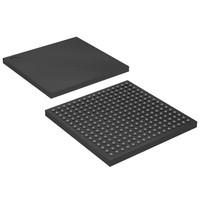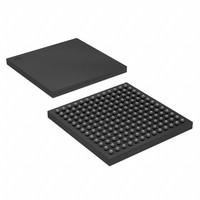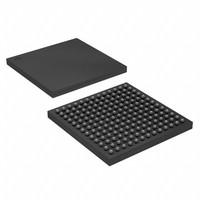

The 10M08DCF256I7G is a versatile Field Programmable Gate Array (FPGA) built to meet the demanding requirements of modern applications in areas such as automotive systems, industrial automation, and advanced consumer electronics. This FPGA is part of the MAX 10 series and offers robust performance with its 8,000 logic elements, ensuring reliable data processing, adaptability, and efficiency in a compact design.
Equipped with 256 pins, the 10M08DCF256I7G offers significant flexibility in input and output configurations, allowing developers to tailor the component to their design needs. The FPGA’s unique non-volatile architecture combines the functionality of traditional FPGAs with flash memory integration, offering instant-on capabilities and a reduced need for external storage, making it ideal for designs where responsiveness is critical.
Designed with energy efficiency in mind, the 10M08DCF256I7G is suitable for applications where power conservation is essential, while still providing high-speed operations. This combination of performance and efficiency makes it a preferred choice across industries that demand low power consumption without sacrificing computational power.10M08DCF256I7G Pinout
The 10M08DCF256I7G features a 256-pin configuration, each designated for specific functions to ensure optimal flexibility and connectivity. Here is a breakdown of its primary pin functions:
This comprehensive pin configuration allows for easy integration of the FPGA into a wide array of designs, facilitating both control and data flow management.
The 10M08DCF256I7G FPGA is versatile and finds applications across multiple industries, including:
Here are some alternative models with similar or compatible performance to the 10M08DCF256I7G:
How do I configure the 10M08DCF256I7G?
Is the 10M08DCF256I7G compatible with other components in the MAX 10 series?
What is the operating temperature range for the 10M08DCF256I7G?
Can I use the 10M08DCF256I7G in automotive applications?
What are the power requirements for the 10M08DCF256I7G?
| Specification | Value |
|---|---|
| Number of LABs/CLBs | 500 |
| Number of Logic Elements/Cells | 8000 |
| Total RAM Bits | 387072 |
| Number of I/O | 178 |
| Voltage - Supply | 1.15V ~ 1.25V |
| Mounting Type | Surface Mount |
| Operating Temperature | -40℃ ~ 100℃ (TJ) |
| Package / Case | 256-LBGA |
| Supplier Device Package | 256-FBGA (17x17) |

Buy 10M16SAU169I7G Intel / Altera Corporation, Get familiar with the 10M16SAU169I7G MAX 10 FPGA at V...

Buy 10M16SCE144I7G Intel / Altera Corporation, Get familiar with the 10M16SCE144I7G MAX 10 FPGA at V...

Buy 10M25DAF256C8G Intel / Altera Corporation, Get familiar with the 10M25DAF256C8G MAX 10 FPGA at V...

Buy 10M08SCU169I7G Intel / Altera Corporation, Get familiar with the 10M08SCU169I7G MAX 10 FPGA at V...

Buy 10M04SAU169C8G Intel / Altera Corporation, Get familiar with the 10M04SAU169C8G MAX 10 FPGA at V...